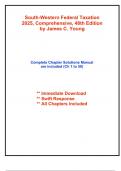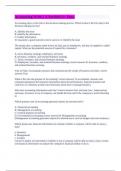Exam (elaborations)
Solutions for South-Western Federal Taxation 2025, Comprehensive, 48th Edition by Young (All Chapters included)
- Module
- Institution
Complete Solutions Manual for South-Western Federal Taxation 2025, Comprehensive, 48th Edition by James C. Young, David M. Maloney, Annette Nellen, Mark Persellin, Andrew D. Cuccia ; ISBN13: 9780357988817....(Full Chapters included and organized in reverse order from Chapter 30 to 1)...Chapter 1. A...
[Show more]




